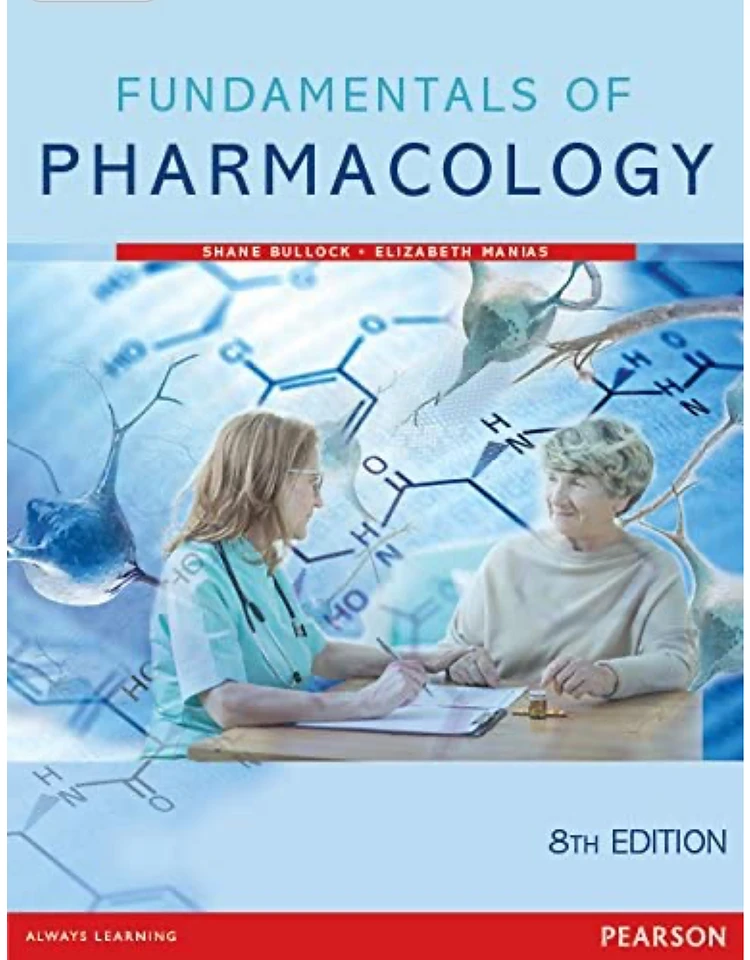Fundamentals of Pharmacology 3rd Edition :
Features
This edition reflects the availability of medicines in Australia and New Zealand at the time of publication. Consistent with information currently available to us, we have updated new medicines that have entered the marketplace, as well as those that have been removed since the last edition.
Where appropriate, the therapeutic approaches associated with the management of important clinical conditions, such as cardiovascular disease, diabetes mellitus and psychiatric illness have been brought up to date with current clinical guidelines.
New to this edition
Book organisations
The organisation of the book content has been revised. The Table of Contents has been reduced from 83 chapters in 15 sections in the last edition to 79 chapters in 13 sections in this edition. This change achieves the streamlining of content and focus and should make the text less daunting for students to navigate. We have also removed brand names from the medicine summary tables at the end of most chapters to reinforce the emphasis on medication groupings and generic names.
Full-colour figures and tables
Chapter figures are printed in full colour, providing the representations of structures and processes with great depth and vibrancy. Receptors are rendered as G-protein-coupled or ion channels rather than basic geometric shapes. A number of new figures and tables have been included to assist students in visualising difficult pharmacological concepts, the sites of actions of drugs and the range of drug effects expected in a person when particular drug groups are administered. Concept maps linking the pharmacology and pathophysiology are included in this edition and cover the following common conditions: diabetes mellitus, rheumatoid arthritis, asthma, inflammatory bowel disease and ischaemic heart disease.
End-of-chapter and end-of-section features
The book contains over 800 end-of-chapter questions to assist in the consolidation of learning – all of these have been reviewed. New and revised integrated case studies appear at the end of sections to assist with making links between theory and practice.
Product description
From the Back Cover
Fundamentals of Pharmacology , BOOK ORGANISATION
The organisation of the book content has been revised. The Table of Contents has been reduced from 83 chapters in 15 sections in the last edition to 79 chapters in 13 sections in this edition. This change achieves the streamlining of content and focus and should make the text less daunting for students to navigate. We have also removed brand names from the medicine summary tables at the end of most chapters to reinforce the emphasis on medication groupings and generic names.
Fundamentals of Pharmacology, FULL-COLOUR FIGURES AND TABLES
Chapter figures are printed in full colour, providing the representations of structures and processes with great depth and vibrancy. Receptors are rendered as G-protein-coupled or ion channels rather than basic geometric shapes. A number of new figures and tables have been included to assist students in visualising difficult pharmacological concepts, the sites of actions of drugs and the range of drug effects expected in a person when particular drug groups are administered. Concept maps linking the pharmacology and pathophysiology are included in this edition and cover the following common conditions: diabetes mellitus, rheumatoid arthritis, asthma, inflammatory bowel disease and ischaemic heart disease.
Fundamentals of Pharmacology, END-OF-CHAPTER AND END-OF-SECTION FEATURES
The book contains over 800 end-of-chapter questions to assist in the consolidation of learning―all of these have been reviewed. New and revised integrated case studies appear at the end of sections to assist with making links between theory and practice.
About the Author
you may like .https://natashabookstore.com/books/basic-engineering-circuit-analysis/












Reviews
There are no reviews yet.